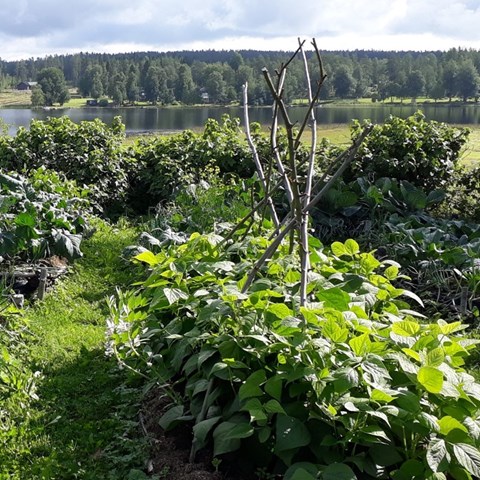Research in the Nordic region - some examples

There are three Nordic rehabilitation gardens whose activities have been studied and evaluated by researchers for extended periods: Gröna Rehab (Green Rehab) in Gothenburg, Sweden, the Alnarp rehabilitation garden i Alnarp (now closed) and Terapihaven Nacadia (Nacadia Therapy Garden) in Hørsholm, Denmark. The activities are aimed at people with stress-related conditions and are led and planned by multi-modal teams which include several professional disciplines, including occupational therapist, psychotherapist, horticulturist and physiotherapist. The treatment groups are small and participants stay in the gardens, which are designed for research purposes, a few times a week for a number of weeks.
The fact that participants have often been able to return to some kind of work or study after the end of the rehabilitation period is a good testimonial. According to the researchers, the cross-disciplinary teams, as well as the small participant groups, are important for achieving good outcomes (nature on its own, without the relaxing activities, produces results, just not as good. Larger groups produce worse results than smaller groups). The duration of rehabilitation is also significant, according to the researchers. (The longer the period, the better the effect). Further follow-ups have also shown that the beneficial effect is long-lasting.
Despite relatively extensive research, one important issue is still considered to be unanswered: What actually is it about garden rehabilitation that is so effective? Is it the green environment? The experienced staff? The activities? The social togetherness? The absence of a stressful environment, mobile phone, social media and the like? The participant's own personality? Or is it all of the above?
Independent researchers often point out precisely this lack of clarity as to exactly what is helping, as well as the fact that studies often lack descriptions of the exact rehabilitative context (which enable possible differences between different activities to be identified). It also calls for more randomised controlled studies, as well as high-quality studies comparing nature-based health activities with other rehabilitation methods.
One trial studying he effect of the green environment alone has been carried out in Umeå, Sweden. They investigated whether exhaustion disorders could be cured by forest stays alone, without any other treatment. A randomised study showed that spending only three months in the forest did not make participants ready for work again, but that their mood improved and that they began to cope better and change their lives.
Finnish researchers have examined, amongst other things, how different forest types affect the way people feel. The study participants stayed in older managed forest, urban forest, old-growth forest and young, managed forest, sometimes sitting still and resting, sometimes walking. All types of forest proved to have a restorative effect, but the best outcome was achieved in old forest (whether managed or unmanaged), while the young forest was ranked the lowest in terms of outcomes. The researchers also found, amongst other things, that biodiversity ranked high on the well-being scale.
Text/Åsa Ottosson